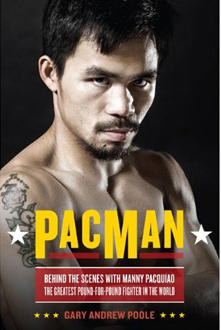
Models flaunt their hard work at the Victoria's Secret Fashion Show, airing Nov. 30 on CBS. (Photo by Theo Wargo/Getty Images)
Victoria's Secret designs the lingerie. Justin Gelband designs the bodies that wear it. At the annual runway show, Gelband's efforts were getting all the attention. He’s been called the Model Whisperer, ever since the label began tasking him with getting models in shape for their epic catwalk. “I started for Victoria’s Secret a few years ago with Angie Lindvall and it just took off from there,” Gelband said yesterday in between preparations for the big event, which airs, Tuesday, Nov. 30 on CBS. This year, he spent the past 12 weeks training eight women for the yesterday's runway Olympics.
Your job is more than just getting women in shape. It's about sculpting the kind of bodies that can really sell a bra. Is there a secret to your formula?
There isn't one. Everybody is different. I build a foundation for each woman. I find out who they are, what they do now and create a new program for them using fundamental exercise programs. I train them at a Mixed Martial Art studio called Mushin in New York City. Each girl has her own specific type of workout. The movements and exercises may be similar in structure, but they are always geared specifically for each girl and her needs.
What are your hours like leading up to the Victoria’s Secret show?
My hours are based upon the girl’s schedules. I am 24/7 and I tend to my girls around the clock. A typical day starts between 6 or 7 am in the gym training and I’m done between 8 and 10 pm.
Does anyone ever break down in the process?
They all have their days of breaking down. These girls weren't all born skinny, they certainly weren't born with perfect bodies and they all have insecurities just like any other women. I think the hardest part of my job is seeing the girls not get a job, magazine or runway they wanted.
How did you get this job?
I must thank the model, Ms. Angela Lindvall, who allowed me the opportunity to get her in shape after bearing her second child. I was living in L.A. at the time, and we had 12 weeks for her to get in shape for the Victoria's Secret show and we did it as a team. From there the word spread. I also had the owner of One model management, Scott Lipps introduce me to Miranda Kerr, a longtime client and friend. Ali, the booker at Women introduced me to Anne V, Irina Shayak and Candice Swanpoel. All of them still train with me to this day.
So what goes into training for the show?
A month or so before the show we fine-tune the girls already healthy eating regimens. My girls love to eat, so we start taking out salty, sugary, carb-laden foods. We up the intensity of our workouts and keep setting and achieving small goals along the way. The 10 day period before the show begins gets really intense and we make sure we are making the most out of each meal and each workout. A balance of protein, fat and carbs is expected from each and every girl. It depends on their body type and their blood type.
Justin’s takeaway tips: Most of us aren't going to be wearing a diamond bra and a pair of wings for an audience of millions any time soon. But that doesn't mean we can't get a "Body by Justin." Here are some tricks of his training trade:
- Go lighter on the legs: Gelband doesn't push the kettle bells or heavy leg weights. Bulking up leg muscles won't create an overall slimming effect. Instead, his leg work-outs rely on balance to develop overall toning. Try Justin's 360 kick exercise.
- Personalize your diet: Gelband designs his diet plans along blood type guidelines. The idea behind it is that your blood type affects the way you digest and metabolize food.
- Posture makes perfect: Core strength doesn't just firm up your midsection, it dictates how you carry yourself. You can have a killer body that's hidden behind a slouching posture. Gelband incorporates both balancing and ab-tightening Pilates routines into his regimen to improve overall posture. Try his Ab Mania workout.
- The 3 best places to tone: Hips, inner thighs and stomach. You don't need to perfect every muscle in your body, just the three biggies. Sculpting these areas is a shortcut to an overall appearance of rock-solid fitness. Try the plank cross for an inner thigh workout.

